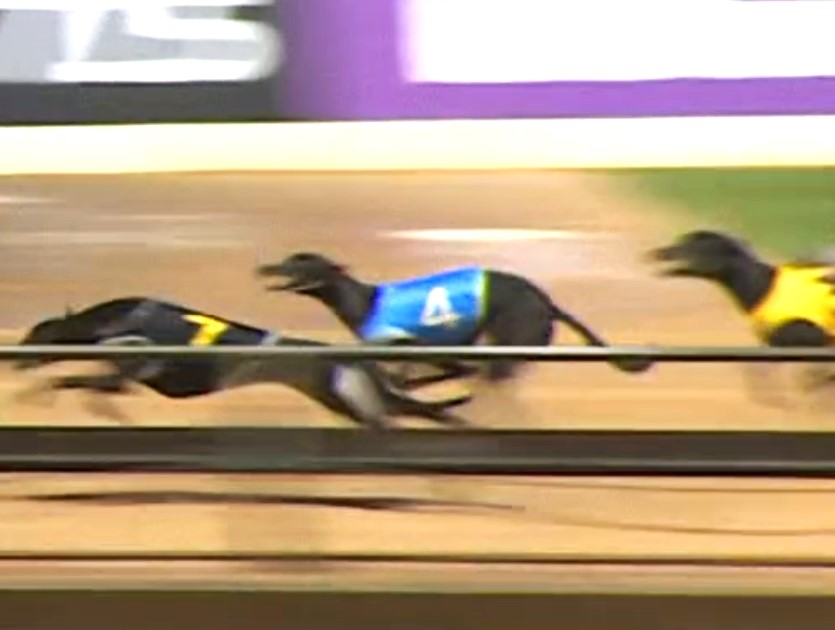by Warren Young, Adjunct Associate Professor in Exercise and Sport Science, Federation University Australia
In 2023, there were 120 deaths and 11,601 injuries on greyhound racing tracks across Australia. The injuries on tracks include fractures, dislocations, muscle strains, and other soft tissue damage.
The CPG report on racing deaths and injuries in Australia in 2022 showed that about three-quarters of all track deaths were due to fractured legs. These deaths occurred on bends (especially the first bend) where dogs become bunched up and can easily collide with each other or the rail, sometimes resulting in falls at high speed. Another 8% of deaths occur in the straight portion of tracks, with 12% occurring in the catching pen at the end of the race.
Greyhound racing is inherently dangerous. According to Hansen (3), “the physical stresses of racing make some injuries inevitable.” There are many injury risk factors which must be identified, understood and addressed in a genuine effort to reduce track deaths and injuries (Table 1).

Table 1. Main injury risk factors and possible solutions to mitigate the number of injuries and deaths of racing greyhounds.
| RISK FACTOR | POTENTIAL SOLUTION TO REDUCE INJURY RISK | |
| Track design | Asymmetrical loading on limbs due to curve running (4) | Change all curved tracks to straight tracks |
| Contact with other dogs from congestion, increasing the risk of falling (1) | Use straight tracks | |
| Contact with other dogs, increasing the risk of falling (1) | Use extended lure to middle of track | |
| Sub-optimum track surface (too hard or soft) (1) | Modify track surface | |
| Collision with rigid objects on track or in catching pen (2) | Increase padding thickness on objects on all tracks | |
| Racing procedures & rules | Contact with other dogs (1) | Reduce the number of dogs in a race to six |
| Contact with other dogs and sudden stopping in catching pen (2) | Modify catching pen procedure e.g. “Finish on lure” | |
| Bunching at first curve, causing contact with other dogs | Preferred box draws rather than random box draws | |
| Heat stress | Strictly enforce heat policy so races are cancelled in hot temperatures e.g. 31° C | |
| Age of dogs (older at greater risk) (5) | Rule to retire dogs at a certain age or number of races | |
| Fatigue and stress fractures due over racing | Rule to limit the number of races to once every 7 days | |
| Racing with residual injuries (4) | Comprehensive Vet screening of all dogs before all races | |
| Non-modifiable factors | High forces on musculoskeletal system due to sprinting at maximum speed (3,4) | Nothing. Forces are inherently high in sprinting. |
| Contact with other dogs on straights | Nothing, because dogs can’t be steered or made to run in lanes |
If the greyhound racing industry is serious about reducing injuries and deaths, it should immediately address all the modifiable risk factors. Since the evidence for some of the solutions is not clear, the industry should investigate their effectiveness as soon as possible. Currently, only some of the risk factors are addressed by all jurisdictions in Australia. In addition, any rules designed to reduce injuries must be strictly enforced.
A barrier to this recommendation would be the financial cost to the industry, so if the necessary changes are not implemented, the welfare of racing dogs is clearly not a priority to the industry.
Regardless, the non-modifiable risk factors indicate that greyhound racing cannot be made safe. One solution is to replace live dogs with virtual greyhound racing. This form of computer-generated racing is currently available and although I am not promoting sports betting, it cannot cause greyhound deaths and injuries!
References
- Eager D, Hayati H, Hossain I. Identifying optimal greyhound track design for greyhound safety and welfare. University of Technology Sydney Report, 2017.
- Eager D, Zhou S , Hossain I, Ishac K, Halkon B. Research on impact attenuation characteristics of greyhound racing track padding for injury prevention. Vibration 2022, 5, 497–512. https://doi.org/10.3390/vibration5030028
- Hansen R. Report to New Zealand racing board on welfare issues affecting greyhound racing in New Zealand, 2017.
- Knight A. Injuries in racing greyhounds Cleveland, UK: Greyt Exploitations. 2018
- Palmer AL, Rogers CW, Stafford KJ, Galc A, Bolwell CF. A retrospective descriptive analysis of race-day injuries of greyhounds in New Zealand. Aust Vet J 2021. https://doi.org/10.1111/avj.13064
